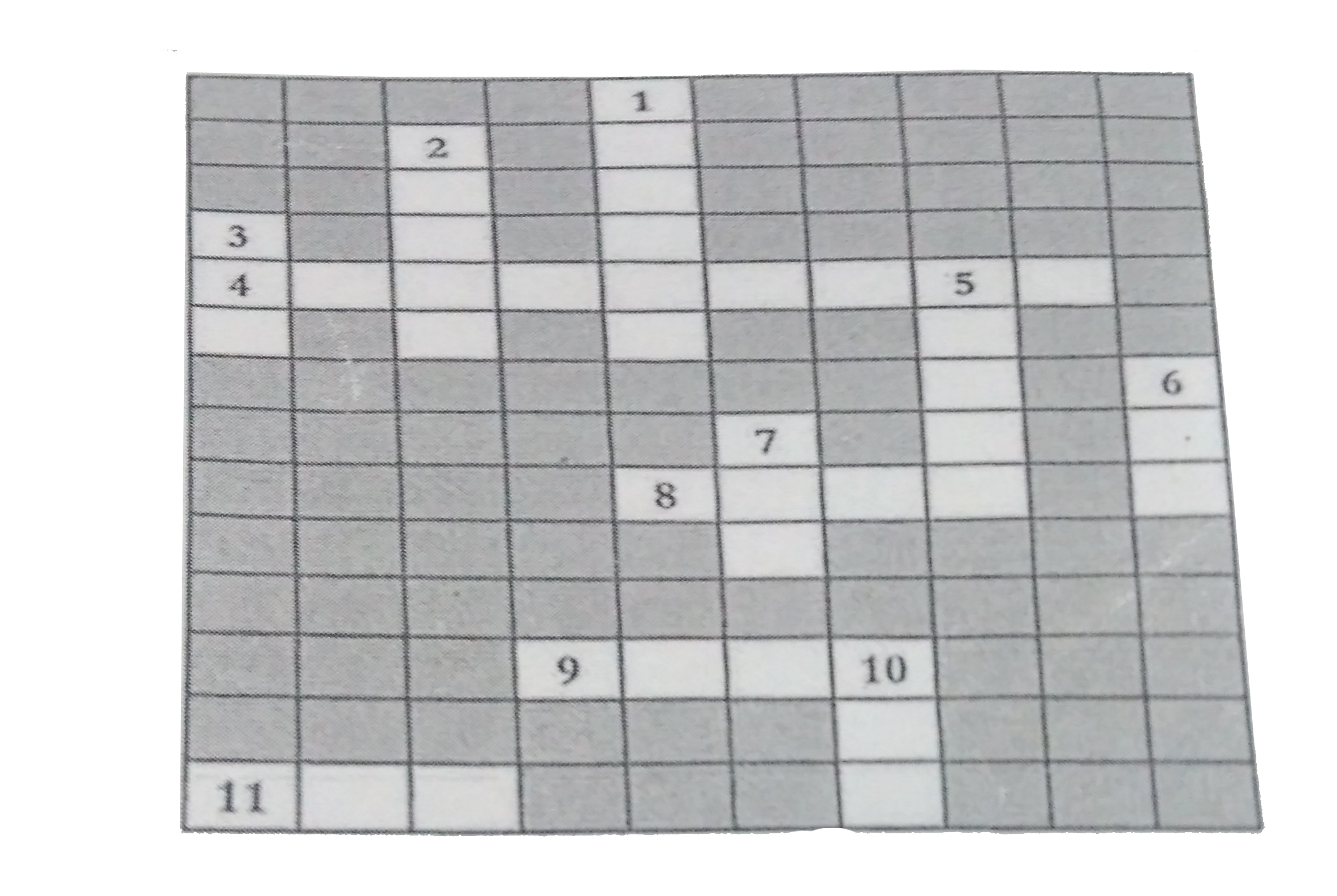Which of the following algebraic expression are polynomials?
(i)x1/2+y1/2+z1/2 (ii)x2+y2
(iii) √x+3
√5+x5
(v) 2016
The correct Answer is:(ii), (iv),(v) are polynomials
(1) x12+y12+z12 is not a polynomial since the exponens of the variables are fractions.
(ii) x2+y2 is a polynomial.
(iii) √x+3 is not a plynomial, since the variable (√x=x12) has fraction exponent.
(iv) √5+x5 is a polynomial.
(v) 2016 is a polynomial of degree zero. It is a constant polynomial
Topper's Solved these Questions
- ALGEBRABook:PEARSON IIT JEE FOUNDATIONChapter:ALGEBRAExercise:CONCEPT APPLICATION
Explore 5 Videos
- ALGEBRABook:PEARSON IIT JEE FOUNDATIONChapter:ALGEBRAExercise:ASSESSMENT TEST
Explore 15 Videos
- ALGEBRABook:PEARSON IIT JEE FOUNDATIONChapter:ALGEBRAExercise:TEST YOUR CONCEPTS (VERY SHORT ANSWER TYPE QUESTIONS)
Explore 32 Videos
- FACTORS AND MULTIPLES Book:PEARSON IIT JEE FOUNDATIONChapter:FACTORS AND MULTIPLES Exercise:Crossword
Explore 1 Video
Similar Questions
If A=2x3−3x2−4x+5,B=2x2−x3+1andC=x2+x+2, then find the degree of A+2B-C.
View SolutionName the following algebraic expresions based on the number of terms.
View SolutionA quanity which has no fixed value is called a/an _____
View Solution
AcrossDown4.The natural having more than two factors1.The number of divisor when the remainder is 08.The units digit of an odd number which is divisible by 52. The natural number having exactly two factors9. The number of common factors of co-primes other than 13. The greatest, among the common factors of given number 11. All the even numbers are divisible by5. The minimum number of factors of a composite number6. The least among the common multiples of given numbers7. A number which is divisible by 2 and 3, it is also divisible by 10. The HCF of two co-primes is
View SolutionAssuming that x, y, z are positive real numbers, simplify each of the following: (i) (√x−3)5 (ii) √x−2y3 (iii) (x−23 y−12 )2
View SolutionIf (x^(2))/(a^(2))-(y^(2))/(a^(2))=1,(dy)/(dx) can be expressed as (i) (x)/(y)( ii) (x)/(sqrt(x^(2)-a^(2)))( iii) (1)/(sqrt(((x)/(a))^(2)-1)) (iv) none of these
View SolutionThe SN1 reactivity of the following halides will be in the order:
(i) (CH3)3C−Br
(ii) (C6H5)CHBr
(iii) (C6H5)2C(CH3)Br
(iv) (CH3)2CHBr
(v) C2H5Br
View SolutionWhich of the following expressions are polynomials ? In case of a polynomial write its degree.
(i) x3−5x+2
(ii) y2+√2y−√5
(iii) 2√x+7
(iv) −6
(v) 4t2+16t+2√3
(vi) z2+5z2+1
(vii) 13x
(viii) 1−√5x
(ix) 14x−2+3x+5
(x) 6√x+x3/2√x
View SolutionWhich of the following expressions are polynomials ? In case of a polynomial , write its degree.
(i) x5−2x3+x+√3
(ii) y3+√3y
(iii) t2−25t+√5
(iv) x100−1
(v) 1√2x2−√2x+2
(vi) x−2+2x−1+3
(vii) 1
(viii) −35
(ix) x22−2x2
(x) 3√2x2−8
(xi) 12x2
(xii) 1√5x1/2+1
(xiii) 35x2−73x+9
(xiv) x4−x3/2+x−3
(xv) 2x3+3x2+√x−1
View Solutionयदि x,y,z धनात्मक वास्तविक संख्याएँ है तब निम्न का सरलीकरण कीजिए।
(i)√x−2y3 (ii)(x−2/3⋅y−1/2)2
(iii)(√x−3)5
View SolutionComplete the following reactions :
(i) CH3−CH2Br+KOH(aqueous)Boil−−→X+Y
(ii) CH3−CH2Br+NH3→X+Y
View SolutionWrite the coefficient of x2 in each of the following br> (i)15−3x+2x2
(ii) 1−x2
(iii) πx2−3x+5
(iv)√2x2+5x−1
View SolutionWrite the coefficient of x2 in each of the following br> (i)15−3x+2x2
(ii) 1−x2
(iii) πx2−3x+5
(iv)√2x2+5x−1
View SolutionWrite the coefficient of x2 in each of the following br> (i)15−3x+2x2
(ii) 1−x2
(iii) πx2−3x+5
(iv)√2x2+5x−1
View SolutionWrite the coefficient of x2 in each of the following br> (i)15−3x+2x2
(ii) 1−x2
(iii) πx2−3x+5
(iv)√2x2+5x−1
View Solution